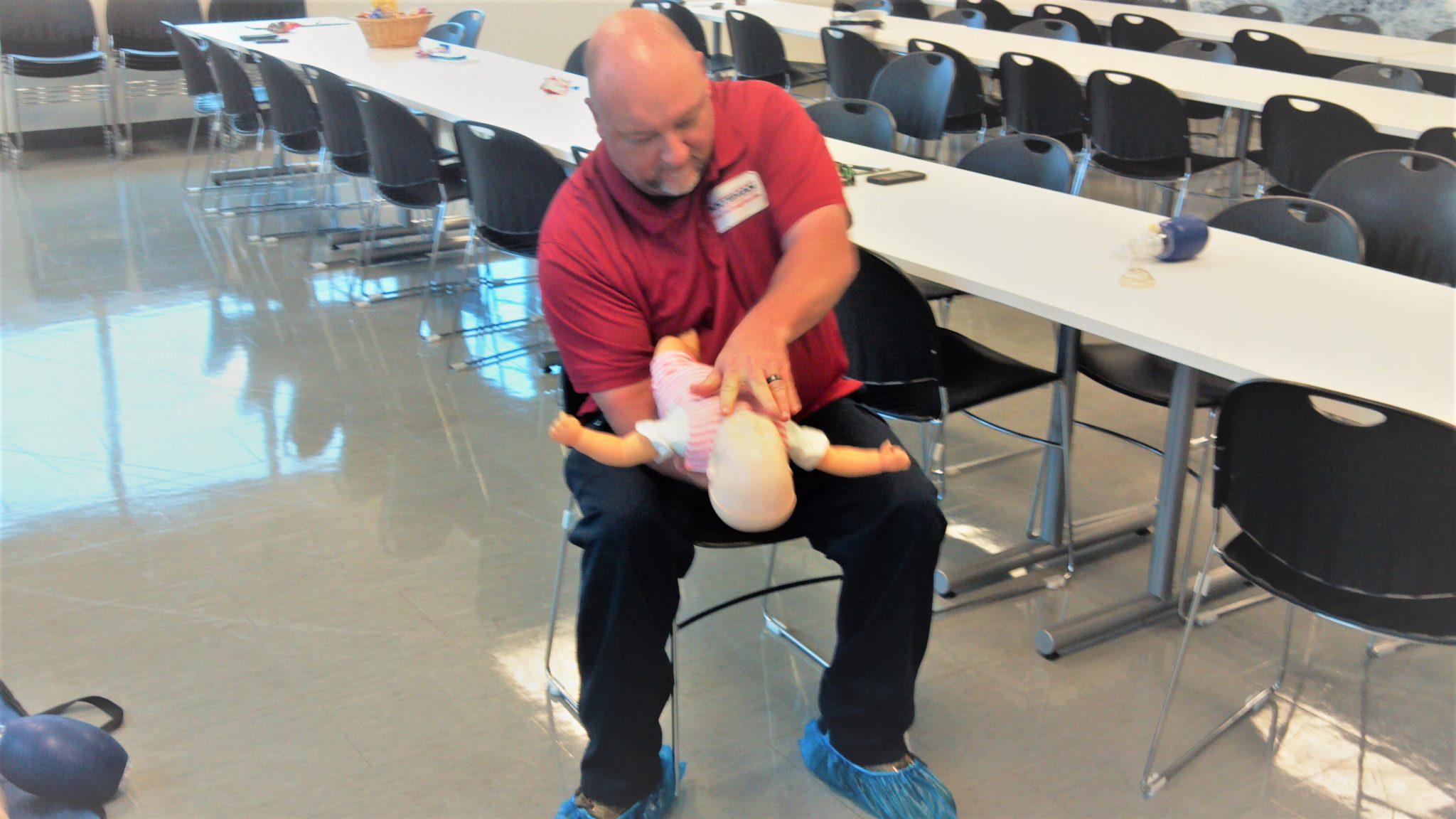To perform CPR on a baby
Infant CPR: Most cardiac arrests in babies occur from lack of oxygen, such as from drowning or choking. If you know the baby has an airway obstruction, perform first aid for choking. If you don’t know why the baby isn’t breathing, perform CPR.
To begin, examine the situation. Stroke the baby and watch for a response, such as movement, but don’t shake the baby. You may pat them on the bottom of their foot firmly and shout: baby, baby, wake-up are you okay.
If there’s no response, follow the CAB procedures below and time the call for help as follows:
- If you’re the only rescuer and CPR is needed, do CPR for two minutes — about five cycles — before calling 911 or your local emergency number.
- If another person is available, have that person call for help immediately while you attend to the baby.
Compressions: Restore blood circulation
- Place the baby on his or her back on a firm, flat surface, such as a table. The floor or ground also will do.
- Imagine a horizontal line drawn between the baby’s nipples. Place two fingers of one hand just below this line, in the center of the chest.
- Gently compress the chest about 1.5 inches (about 4 centimeters).
- Count aloud as you pump in a fairly rapid rhythm. You should pump at a rate of 100 to 120 compressions a minute.
Airway: Clear the airway
- After 30 compressions, gently tip the head back by lifting the chin with one hand and pushing down on the forehead with the other hand.
- In no more than 10 seconds, put your ear near the baby’s mouth and check for breathing: Look for chest motion, listen for breath sounds, and feel for breath on your cheek and ear.
Breathing: Breathe for the baby
- Cover the baby’s mouth and nose with your mouth.
- Prepare to give two rescue breaths. Use the strength of your cheeks to deliver gentle puffs of air (instead of deep breaths from your lungs) to slowly breathe into the baby’s mouth one time, taking one second for the breath. Watch to see if the baby’s chest rises. If it does, give a second rescue breath. If the chest does not rise, repeat the head-tilt, chin-lift maneuver and then give the second breath.
- If the baby’s chest still doesn’t rise, examine the mouth to make sure no foreign material is inside. If an object is seen, sweep it out with your finger. If the airway seems blocked, perform first aid for a choking baby.
- Give two breaths after every 30 chest compressions. If two people are conducting CPR, give two breaths after every 15 chest compressions.
- Perform CPR for about two minutes before calling for help unless someone else can make the call while you attend to the baby.
- Continue CPR until you see signs of life or until medical personnel arrive.Infant CPR.

